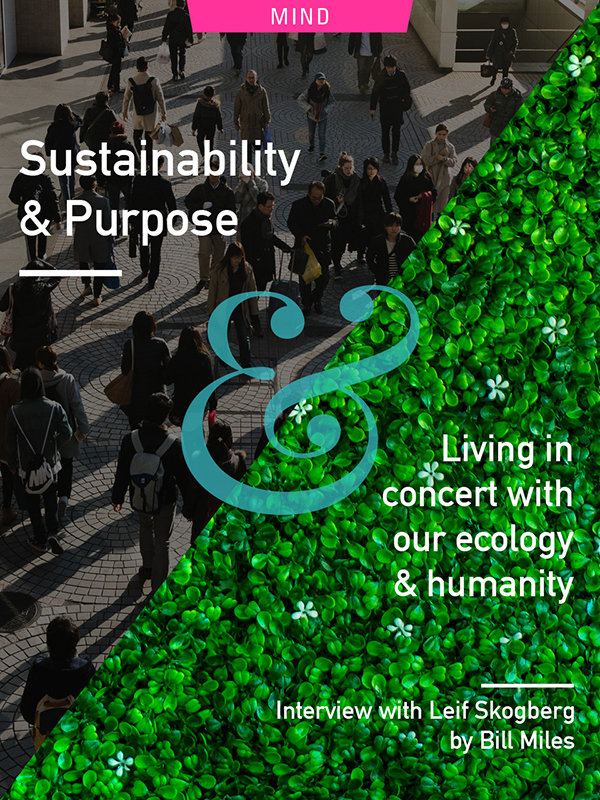
An Interview with Leif Skogberg
By Bill Miles
—
“The journey to create a sustainable world actually starts with individuals.“
—Leif Skogberg
Bill: I first met Leif Skogberg during an event this last year and was so impressed by his resounding commitment to sustainability — I had to sit down to chat with him for Best Self Magazine.
Leif is a whole systems designer, sustainability consultant, and a life purpose coach. He has nearly 20 years of experience in holistic living, leadership, and design. He helps his clients save money and achieve greater health, alignment, and resilience through integrated design.
Welcome Leif.
Leif: Thank you, Bill, for having me!
Bill: I’d like to start out with exploring how you first connected to sustainability. What does that term even mean to you?
Leif: Sustainability has become a loaded term today. It’s often used in different ways: to be sustainable financially or sustainable environmentally. But for me, I see sustainability as a holistic framework for how we create a better world in the future.
A lot of people talk about sustainability as not really being the goal anymore, because the thinking is that if we are ‘sustaining’ what we have right now, we’re still going down a bad path. We’ve already done so much destruction to the planet that we actually need to regenerate nature, we need to restore things, and then we can be sustainable once we’ve repaired the damage.
I think it’s important to understand that sustainability is a balance where we have to restore things to a point at which they’re worth sustaining. We’ve gone to the other end of the spectrum of really disrupting things. So there’s this degenerative and regenerative spectrum. Sustainability is in the middle. It’s that balance point.
Bill: You have an interesting story from your youth of how you got connected to this profound interest of yours. Can you share a little bit about that?
Leif: I grew up as a child in a beekeeping family. So I was actually out in nature a lot, very connected with natural systems. But at the same time, I had a very rough childhood. My adolescent years were pretty challenging. I actually thought that the end of the world was coming before I even would graduate high school. My dad was one of the ‘end-of-days’ preppers, apocalypse-is-coming kind of people.
In my early teens, I was a bit self-destructive because I was being told we were self-destructing our planet. I participated in extreme sports. I partied a lot, did drugs and ultimately, that led me to a place of deep suffering and a profound rock-bottom.
I was considering committing suicide — in a very difficult emotional and physical place. Lots of physical injuries, lots of physical pain, as well as emotional and family pain from parents getting divorced and just seeing a lot of really challenging things as a child.
The turning point came whenI had this experience where I realized that I couldn’t blame anyone anymore for my pain and my suffering, because I was just giving away my power when I did that. I couldn’t get control of my life if I blamed anyone. So, I had this realization that if I wanted to have a future that was positive and healthy and wasn’t riddled with suffering — then I really had to choose wisely. And I had to find truth and understanding if I wanted to live a better life.
That awakening was the catalyst for me heading down a path of seeking and asking: How do I create a better world for myself? How do I become my best self and reduce suffering for myself in the future? And how do I bring that to the world?
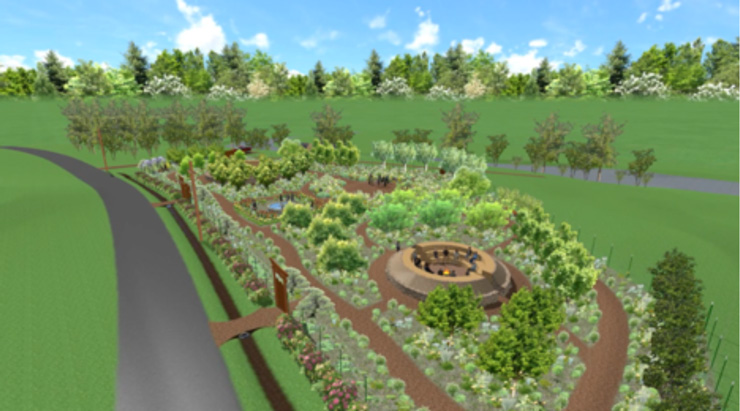
Bill: I love that you realized that the world is not going to fix your problems; you have to fix your problems.
Leif: Exactly.
Bill: So it’s a story of personal accountability.
Leif: Yes. I was really angry with my dad and with what I had been told was this God who was going to end the world. I took out that anger on myself. I became self-destructive, because I felt powerless against these big authority figures that were destroying my life before I could even graduate high school.
So yes, it was this self-responsibility, and this threshold that I crossed of letting go of blame, forgiving my dad, forgiving whatever God there may be — forgiving myself for what I had done to my body and my life. That’s really what sparked a curiosity and an interest in sustainability a few years later.
Bill: You came to that realization at a pretty young age. I think that you had a certain calling to bring your talent forth and spend as much of your life going forward, influencing for good.
Leif: It definitely happened for a reason. Ever since that time, I’ve felt very purposeful. As I inspire others from my journey, I become more inspired — and there’s many who continue to inspire me in a very deep way to live even more deeply into my truth.
Bill: Amen. As I understand it, your work is split — you have a personal side, where you help as a life-purpose coach for individuals, and then you have a business side, where you’re a sustainability consultant, helping businesses leave a better mark on the planet.
Leif: That’s right. It is a split in the sense of how we see business in modern times. It’s been hard for people, even myself, to frame it and understand how it all fits together. Because if you are a healer or a life coach, that’s one niche and industry. And then if you’re an environmental and a sustainability activist, that’s a whole other direction. And then there’s a vast area in between. That’s my sweet spot bridging the two.
What I’ve realized is that the journey to create a sustainable world actually starts with individuals. We each need to understand how to be empowered, how to transform our own lives, how to grow, how to design our future, and how to create an innovative design for our life. And to believe in that vision, to believe in a positive future self or a positive future planet. And then to strategically take action to manifest that, to build and implement that design that we want for our life.
The patterns and principles of how to heal and become whole in one’s self are actually very similar to sustainability. Very related, and relevant, and connected to the garden of life.
In my own personal journey towards healing and truth, I started to see the patterns of how we become whole, how we integrate the various aspects of duality, of what people often talk about as the four or five elements — these different quadrants of our life and our existence.
I was seeing these patterns, as I started to study permaculture, sustainability, natural building, ecology, and horticulture — my degree is in Environmental Horticulture Science. I realized: It’s all the same. They’re connected.
And then a few spiritual teachers that came into my life were saying the same thing, that the water of our planet is polluted because the consciousness and the psyche and the emotions of humanity are polluted. And the minds of the collective conscious of humanity are influencing our environment and our world, and our culture is influencing our outer world. There is a symbiotic relationship.
Bill: It’s more than a metaphor. It’s actually an energetic synergy.
Leif: That’s exactly right. As I started to see all these patterns, I wanted to create a model and understanding for myself that maybe I could even share with others about how they all connect. That’s what I created a few years ago. I call it ‘Appreculture Design’.
Bill: You say that, “Appreculture Design is a concept of designing and building an appropriate and appreciation-based world and culture. Henceforth ‘Appreculture’. It uses a simple garden-based framework for creating a sustainable world from the inside out.”
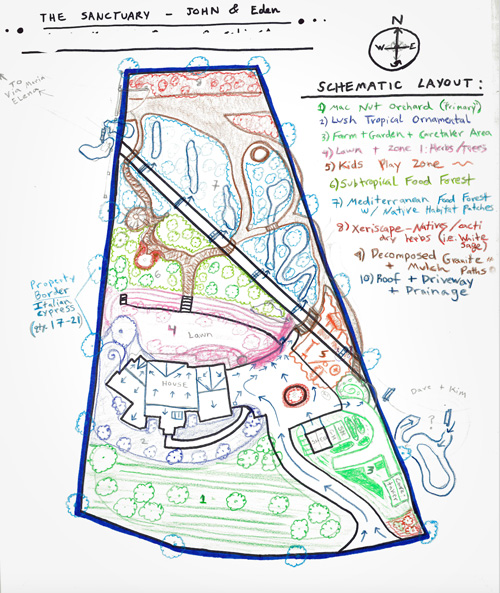
Leif: Yes. There are these patterns of inner and outer landscapes. I couldn’t ignore the interdependence and the interconnection. As I started to explore them further, I realized there are many other people who have taught and spoken about this.
Rudolf Steiner was one of them. He taught widely on holistic healing, pedagogy and farming — and revealed all these different aspects of how we create balance and harmony in our reality.
The ecology of nature is made up of multiple systems: mineral, water, gas elements and energy — with cycles that flow through and drive the whole system.
The human body is very similar. You have the water, the liquids, both in the vascular system, as well as the lymphatic system that circulate and move nutrients around. And you have the gases and oxygenation — and it’s so important for all the cells to work properly. Then you also have the energy, that spark in our eyes that drives the whole system. We get that from directly absorbing the sun, and also from our food energy.
I’m not the first one to come up with these connections, but I’ve been starting to put them all together to create this easily understood, garden-based, nature-based framework for how we can systematically heal nature, culture, society, economic systems and the individual self that is at the center of it all.
Bill: While the idea is not new, perhaps it’s become more prevalent. People tend to live in the moment. They’re not necessarily future-tripping about how their activities are going to affect the world for our children and generations to come. But we’re now at a critical point where we need to think that way.
What can people, as individuals, do in a very tactical way to become more sustainable?
Leif: To reiterate, they really can address these four spheres in their life. Focus on their personal self-care and their own health, by getting proper food intake, diet, and regular sleep — something I often find challenging, being married with two kids, demands of work, etc.
Getting enough sleep is vital and preferably synched with the cycles of nature. There’s a lot of science to back up that. And then getting exercise, meditating, not being too fiery and busy in the head, and keeping the energy systems in our body balanced and circulating properly.
Self-care is a critical part of creating a sustainable world. When people do that for themselves, not in a selfish or egoic materialistic way, but in a way where people are taking responsibility for themselves — it improves the collective.
And then from there, we can start to look at our financial sustainability, our economic health, and our personal life, which I really see as: What’s the outer purpose of our own individual life? How do we make a positive influence in the world? How do we follow our passion, live our dreams, and then monetize that so that we are reimbursed for what we’re giving in service to the betterment of people and the planet?
Bill: Ultimately if we can elevate our consciousness about our self-care, we’re better positioned to be aware of our greater impact. We can also be mindful of our more external practices, like where we spend our money, the businesses we choose to work with and purchase from.
Leif: Very true. And ask ourselves, What are we investing in? Not only our own time and energy, but our finances as well. Everyone’s probably heard this now, but every time you buy something, you’re casting a vote.
I don’t buy non-organic dairy, or non-organic non-free-range meat, because I don’t think it’s good for my body, but I also don’t like voting for the opposite of my values. I like voting for healthy and responsible treatment of animals.
Bill: I also believe there’s an energy associated with food. Healthy plants and happy animals make for energetically positive food for us.
Leif: There are systematic approaches that we can take with self-care practice, economic investments and sustainability — and by supporting companies that are responsible, and making it known. If you’re leaving a bank because of their practices, make it known why you’re leaving.
And then there are all the social, and cultural aspects of sustainability, where we have to get along. We have to be able to create peace between our loved ones and in our neighborhoods. We need skills to be able to speak with non-violent communication, to have compassion for people — to have empathy for them and their situation, to make room for their perspective.
It’s important to create peace and harmony and connection between humans, even if we totally disagree on something — to respect that perspective and opinion and to see it as something that you might learn from.
Bill: In general, when clients approach you, is this new for them? Or are they already of the framework, and what you’re providing is tactical direction?
Leif: It’s a little bit of both. Usually they align with the vision, and they have a heartfelt intention to live in this kind of way — a desire to be the change they wish to see in the world. They’re interested in going green and taking care of the planet.
They want to understand how to facilitate a better relationship in a community or an eco-village. When people bring me in to help facilitate dialogs, team-building, difficult conversations, integrative design, there’s usually a direct need associated with it. Sometimes it’s diversifying their revenue streams on their property or their farm, or reducing their environmental impact and being more efficient with their utility costs.
I don’t try and dump this whole ‘big earth’ framework on them if that’s not their need. I just meet them where they’re at and help them address the issues at hand. And then I start to evolve the conversation. Have you considered doing some reflection and analysis of the culture in your organization? How do you create synergy and coherence and build a team of trust, and a team of people who are stoked to come to work because they’re working for this amazing organization? Usually there’s a specific gateway to start, and then it becomes a bigger conversation once that relationship evolves.
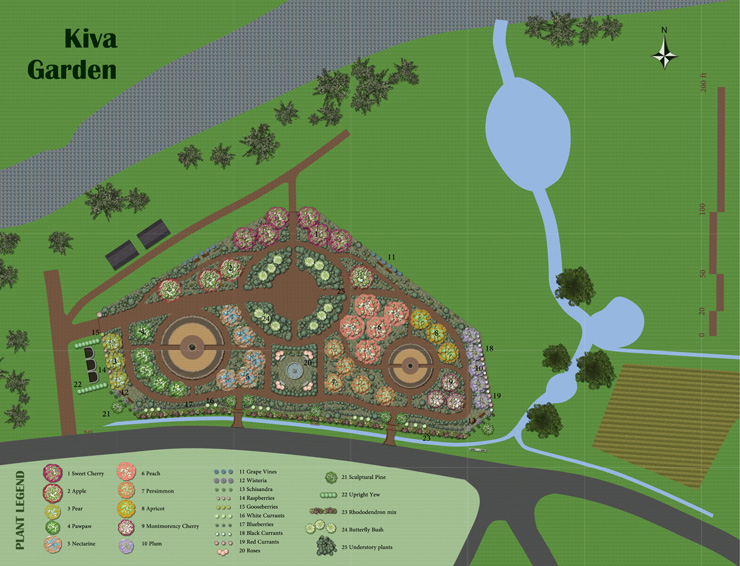
Bill: Do you get involved with school systems? Schools are not known for having a great carbon footprint. Some schools now have their own gardens, and they actually prepare school meals from their harvest, which is extraordinary. Others are still stuck with vending machines filled by Coca-Cola.
Leif: It can be challenging with some schools. I started as an activist in Santa Barbara, California. I was attending university there and was a student organizer and activist at the Santa Barbara Community College. That direct, hands-on, organizing of teams across many different campaigns, and marketing different classes and initiatives was one of the greatest experiences and best teachers I ever had. I was working with a statewide group of students across California, and our goal was to transform the higher educational institutions to become the largest green enterprise in the state.
Bill: Very ambitious!
Leif: And we were actually quite successful.
It was huge because we had students working at city colleges and California state universities. Combined, those systems had a tremendous buying power, a tremendous influence on policy, and of course, educating the future generations. We passed a number of policies on everything from zero-waste and transportation alternatives, to renewable energy, green buildings, and organic foods in the cafeterias. It was pretty comprehensive.
That was where I got lit up and really engaged in this greater conversation: Not only can we make change, but we can make change on a huge scale.
Bill: Any change that’s ever been made at a grand scale started with one person.
Leif: That’s the essence of Appreculture. A lot of the sustainability models talk about ecology and society and economics. But where’s the individual in that whole model? They’re the ones making everything happen.
So, anyone working in sustainability in any way, whether it’s about personal health and awakening, or social or environmental issues — they’re making a choice to be a leader and to have a ripple effect on their surroundings. That’s what Gandhi and so many other amazing teachers did, and that’s what’s happened for me.
Bill: And anybody can do that just by starting with their own backyard. If you can be a change-maker for yourself and for your family, then you’ve done a heroic deed for the world.
Leif: Exactly. We don’t have to take on the weight of changing all the spheres of our reality. We can pick one and focus on it.
And just because someone is working on a specific issue to make economics more sustainable, it doesn’t mean that they’re any more or less important than another who may be working on environmental sustainability or social issues.
They’re all a part of a whole — it’s important for us to understand that, support people to follow their passion, and connect it with this bigger world framework.
Bill: It’s worth noting, however, that economics is what really drives the whole machine. So, if you can tackle the problem through economics, you have the greatest chance of sustaining progress.
I happen to be a big believer in the power of business to impact social change. And I know that you are as well. In Best Self Magazine, we’re always uncovering new businesses and business models that have sustainability as a thread.
There’s a poignant line that you wrote: “Nature is our teacher, and our mirror for our collective consciousness.” I wanted you to touch on our connection to the natural world, something we often lose track of.
Leif: It’s a big topic. There are many angles to look at it from — but ultimately, the natural world has always been a metaphor for our culture, our lives, and our religions. We were thrown from the Garden of Eden because of this original sin, doing something wrong. And then we have had this relationship for many thousands of years where we are no longer part and parcel of the Garden of Eden; we’re not stewards of it anymore.
This new story that’s emerging is referring to that as a time period in human evolution, a period of adolescence — where we had to psychologically separate ourselves from our creator. We had to separate ourselves from our parents, from Father Sky and Mother Earth and rebel — be a bit disruptive. Sort of like a teenage boy, in some ways. Not always the case, but I know I was that way (and I’m seeing it in my eleven-year-old now).
This new story is actually about being caretakers of the earth. We’re stewards of the garden, and we can have a regenerative impact. Our impact doesn’t have to be negative and destructive.
When we go out into nature it’s a healing experience in and of itself — the exercise, the sunshine, the fresh air. But if we walk in nature with intention and with question, we can be reflected some powerful teachings, whether it’s the patterns from a leaf, or an animal that has some deeper connection with us.
There’s much medicine in nature. I love taking groups on medicine walks in nature, little solo fasts on the land, where we just go out and we sit in ceremony and connect with the elements and the animals, and the plants. For some people it’s a bit too ‘woo-woo’, and for others it’s a wonderful, basic thing.
Bill: We’re not different from nature. We’re not intended to dominate it. We are inextricably part of it.
Leif: When we go out and we connect with these elements, it awakens an ancient language within us — a way of connecting and communicating. It is us.
But as I was saying earlier, as we begin to awaken and blossom as a species, that is being simultaneously reflected in how we build buildings, how we design our infrastructure and our roads — and how well we care for the natural systems that are the foundation of all life.
Bill: I hope that the trend continues.
You did mention at one point that the future of business is about social responsibility, and that the profits will become secondary.
I would like to believe that. Yet, I’m a little too jaded to believe that the profits becoming secondary is actually going to happen. I think being profitable, while having a sustainable model is going to be the hybrid. A business must be profitable and must seek profits to continue to do what they do, however sustainably conscious it is.
Leif: I agree and yet, from all I’ve heard from corporate directors, sustainability is smart business.
If you don’t have a sustainability department you’re declining. There’s been a huge awakening of how supply chains are dependent on natural systems. How the quality of our products is dependent upon people. How carbon emissions are creating an insecure environment for crops and foods, and materials and fibers — all the elements that big corporations rely on for production.
Bill: And that philosophy doesn’t always serve short-term profits, which is what shareholders in public companies are driven by.
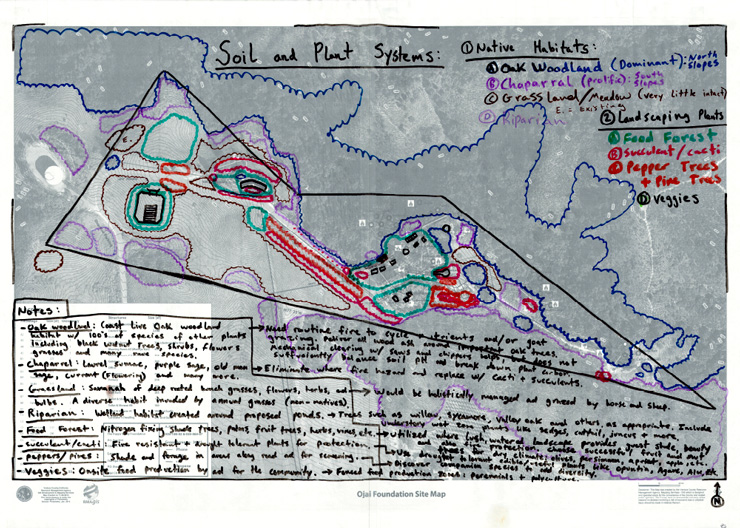
Leif: Yes, and that is the model that is going to have to shift.
Bill: All the new, hot emerging companies you hear about — Warby Parker and so forth — they’re all built on a sustainable model.
Leif: Exactly. Consumers are now demanding it, just like with organic food and healthy products and healthy homes. More and more people — such as you and me and all of those listening to this — are demanding this kind of awareness in corporations. Corporations that don’t have sustainability programs are having a hard time recruiting millennials. They’re having a hard time getting people to fill their labor force.
People want to work for companies that do good. That’s what I mean about this shift to a purpose-driven economy, as opposed to solely profit-driven. People are wanting to work for and buy from companies that are having a meaningful impact, and not just, “Yeah, we donate to this charity,” but rather, it’s a part of their organizing principles.
Bill: I want to touch on B corporations, or ‘benefit corporations’. Would you explain briefly what that is, and why that’s a useful insignia, or certification for a customer to look for in a company they might purchase from?
Leif: The B Corp model is great. I think it’s been around officially for five or six years. Several hundred companies have signed on. It’s basically a way of organizing your corporation and the bylaws of the company, to explicitly say that we are in business to benefit the planet and people.
There’s a systematic review process that everyone who holds the B Corp certification has to go through. Many classic, sustainability-minded companies jumped on the bandwagon right away.
Bill: Patagonia was the first one.
Leif: Yes. They’re based out of Ventura, California; I worked with them a while back. Companies that are jumping on that bandwagon are seeing it increase their growth. Patagonia once created an ad for a holiday magazine that had the headline, “Don’t buy this jacket.”
Bill: It was a famous ad. The idea was, Do not buy this if you don’t need it. Because we don’t need another jacket going into landfill.
Leif: And it worked. “Don’t buy this because you probably have enough.” Turns out, more people bought it than if they would have said, “You should really buy this because of x, y, and z.”
Bill: It also had a subliminal message that their products are built to last and not wind up in landfill. It was a brilliant ad.
Another example is when REI, an outdoor retailer, a few years ago on the day after Thanksgiving (the biggest shopping day of the year in the U.S), initiated their ‘opt-outside’ campaign. They actually closed every store — even online. When everybody else was flocking to the mall for their special Black Friday deals, REI said, “We’re going to shut the door. We want you guys to go outside instead.”
Leif: That’s great.
Bill: They obviously lost some business in the short run on that, but they drew a whole lot of fans in the long-run…and we’re still talking about it.
Leif: Absolutely. And it’s all about taking responsibility — responsibility for their self, for their organization and it’s trickledown. Again, it’s that individual entity making a decision that is then influencing economy and culture and the environment.
Bill: That’s the full circle of this conversation.
For me, this dialog gives me even greater hope for the world, because, although I see the problems, I also see a lot of possibility for solutions. And this planet is amazingly powerful at restoring itself when given an opportunity.
Leif: Absolutely.
Bill: Where can people find you if they want to connect with you?
Leif: To find out about all the different things that I offer, visit my main webpage. They can also follow me on Facebook and Instagram
The last thing I’ll say is, we all have to start on the journey of understanding sustainability — somewhere. Just start.
For me, it’s important that we don’t judge people for being ‘bad’ or un-sustainable. They just might not be educated. They might not be aware of the impact that they’re having. I think we need to be honest with people — and at the same time, compassionate and loving with them, and not be self-righteous, super-eco arrogant people.
Bill: That’s a great point. You want to inspire without judgment.
Leif: Exactly. A big part of this Appreculture design framework — the appreciation piece — is appreciating everyone for who they are, where they’re at, and then coming to a conversation about sustainability and creating a better world by first appreciating them as a human being, as someone who has family and friends, and a product of their environment, whoever they are.
And then from that place, having curiosity around whether or not they are interested in becoming more integrated, aligned, coherent and sustainable with the direction that the future is going.
I found that in my activism work, as a student in college and then later as a consultant over the years, it’s especially important to approach people with a non-judgmental, compassionate mindset.
We all need to be educated about something. I may do something on occasions where someone who’s very eco-savvy might think, “How dare he use that straw at this restaurant?” I usually don’t use straws, but I might forget sometimes. We just need to see the humanity in each other.
Bill: …and always be a student.
Leif: Absolutely. Always maintain that curiosity. If we lose curiosity in our fellow human beings, in our loved ones, and in how we can become a better person — then I think we lose a vitality and an innocence that is divine. It’s like a child’s light that we all hold onto as we grow older.
Bill: Thank you very much for joining in this conversation.
Leif: Thank you and your whole team at Best Self Magazine for reaching out to people and having conversations like this one — and sharing knowledge and information.